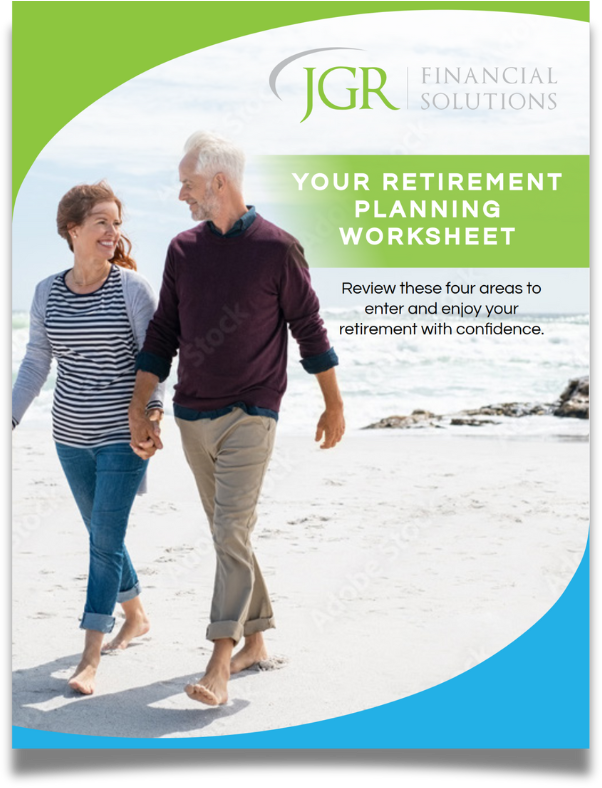With the 2024 tax season in the rearview mirror, now’s the perfect time to plan for 2025 and avoid surprises like an IRS underpayment penalty. As a financial advisor focused on retirees, I want to share a straightforward strategy to keep your taxes on track and penalty-free. This post is especially for those of you considering a Roth IRA conversion, which can sometimes trigger penalties if not handled carefully. Let’s break it down in plain language so you can feel confident heading into next year.
What is an Underpayment Penalty?
The IRS expects you to pay taxes as you earn income throughout the year, not just when you file your return. If you don’t pay enough during the year—through withholding from earned income, pensions, Social Security, or quarterly estimated payments—you might face an underpayment penalty. This kicks in if you owe $1,000 or more when you file and haven’t paid enough upfront. The penalty is calculated based on how much you underpaid and for how long, using the IRS’s interest rate. The good news? With a little planning, you can avoid this penalty entirely.
A Simple Strategy to Stay Penalty-Free
To avoid an underpayment penalty in 2025, you need to pay at least 90% of your 2025 tax bill or 100% of your 2024 tax bill (110% if your 2024 adjusted gross income was over $150,000) throughout the year. Here are three easy ways to do that:
- Adjust Your Withholding: If you receive a pension or Social Security, make sure enough tax is being withheld. You can update your withholding by submitting a new Form W-4P to your pension provider. Increasing withholding reduces what you’ll owe when you file.
- Make Estimated Tax Payments: For income not subject to withholding—like investment earnings or rental income—pay quarterly estimated taxes. These are due April 15, June 15, September 15, and January 15 of 2026. Form 1040-ES can help you calculate these payments.
- Use the Safe Harbor Rule: A stress-free option is to pay at least 100% (or 110%, if needed) of your 2024 tax bill in equal installments throughout 2025. This “safe harbor” protects you even if your income spikes in 2025, as long as you meet this threshold.
By staying on top of these payments, you’ll keep the IRS happy and avoid penalties.
Special Focus: Roth IRA Conversions for Retirees
Many retirees I work with are exploring Roth IRA conversions, moving funds from a traditional IRA to a Roth IRA for tax-free growth in retirement. While this may be a wise decision, it can increase your tax bill because the converted amount counts as taxable income in the year you make the conversion. If you convert funds late in the year, say in November or December, you might risk a penalty. That’s because the IRS assumes your income (including the conversion) was earned evenly throughout the year, so you could be “behind” on taxes for earlier quarters, even if you pay the full tax when you file.
Here’s where the Annualized Income Installment Method can save the day, especially for late-year Roth conversions.
How the Annualized Method Works
This method lets you calculate your required tax payments based on when you actually earned your income, rather than assuming it was spread evenly across the year. It’s a great fit if you plan a Roth conversion toward the end of 2025, when your income jumps late in the year.
Here’s how it works:
-
Track Income by Quarter: You’ll look at your income, including the Roth conversion, for each quarter: January–March, April–May, June–August, and September–December. This method aligns your tax payments with when you earned the income.
-
File Form 2210, Schedule AI: When you file your 2025 taxes, include IRS Form 2210 with Schedule AI (Annualized Income Installment Method). This form shows the IRS that your income varied during the year and that you paid enough tax based on when you earned it. For example, if you convert $50,000 to a Roth IRA in December 2025, Schedule AI can prove you didn’t owe much tax in earlier quarters, potentially eliminating the penalty.
-
Get Professional Help: Calculating Schedule AI can be a bit tricky, as it involves breaking down your income and deductions by quarter. A tax professional can handle this for you, ensuring it’s done correctly.
A Simpler Alternative: Withholding from Your IRA
If the annualized method sounds like too much hassle, here’s an easier option: have taxes withheld directly from your IRA distribution or conversion. When you convert funds to a Roth IRA, you can ask your IRA custodian to withhold taxes—say, 20% or more—before transferring the rest. The IRS treats this withholding as if it was paid evenly throughout the year, even if it happens in December. This can erase any penalty risk without extra paperwork. Just note that withholding reduces the amount going into your Roth, so this strategy may not be as beneficial as if you were to pay the taxes with funds from another source.
Tips for Planning Your 2025 Roth Conversion
-
Estimate the Tax Impact: Before converting, calculate the tax hit. For example, converting $50,000 might add $12,000 to your tax bill, depending on your tax bracket. Plan to cover this through withholding or estimated payments.
-
Spread Out Conversions: To keep your tax bill manageable, consider converting smaller amounts over several years to stay in a lower tax bracket.
-
Talk to Your Advisor: A conversation with a financial or tax professional can help you decide how much to convert and how to pay the taxes to avoid penalties.
Final Thoughts
Underpayment penalties don’t have to catch you off guard. By planning ahead for 2025, you can pay taxes as you earn income—through withholding or estimated payments—and keep penalties at bay. For retirees considering a Roth IRA conversion, the Annualized Income Installment Method is a powerful tool for late-year conversions, and withholding from your IRA is a simple alternative. My goal is to make tax planning as smooth as possible, so you can enjoy your retirement worry-free.
Ready to create a tax plan for 2025? Contact me today, and let’s work together to keep your finances on track.
Note: Tax rules can be complex. Consult a tax professional to tailor this strategy to your situation.


